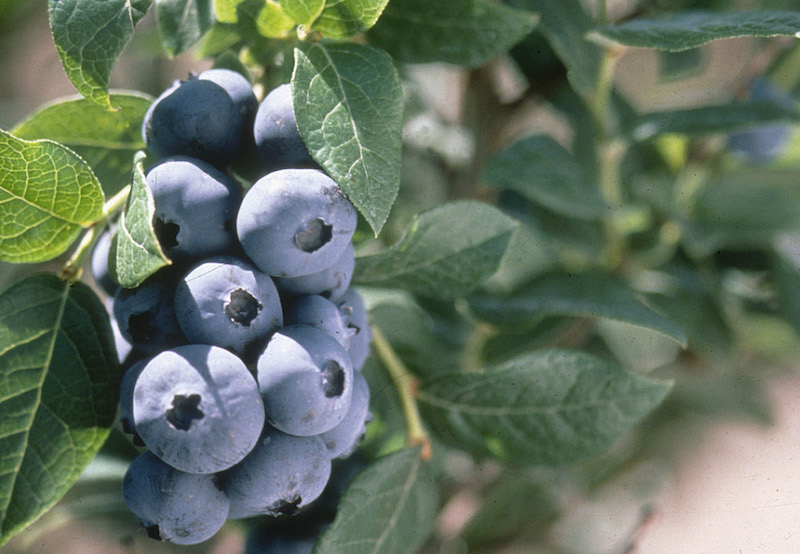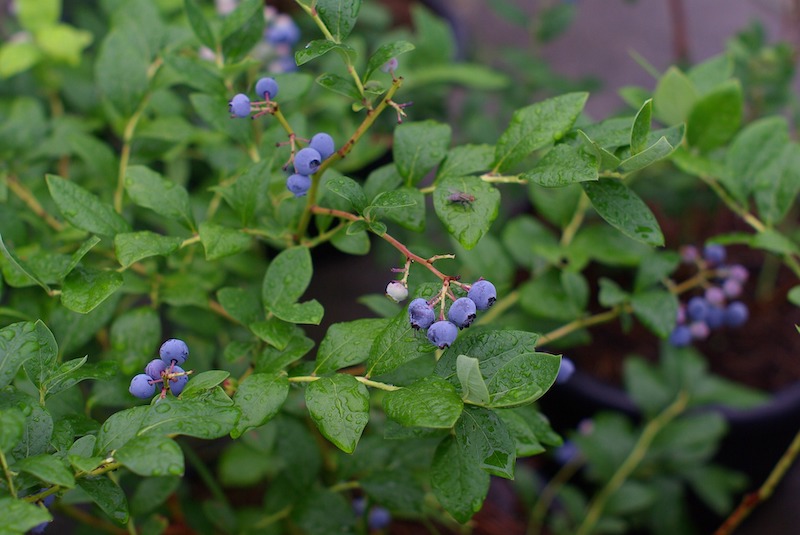Home gardeners looking to bring a boost of healthy produce and fall color to their landscape may opt to incorporate blueberry bushes into plantings. Blueberry bushes, assorted species within the genus Vaccinium, are not particularly challenging to grow. However, they do have certain soil and fertilization requirements that must be observed in order to ensure plant health and fruit development. One other important consideration when cultivating blueberries is that two or more varieties are required for cross-pollination and maximum fruit production. They are also slow to reach maximum fruit yield, but certainly worth the wait!

Caring For Blueberry Bushes
Blueberries are slow growers, taking up to 10 years to reach mature size even under ideal conditions. A layer of organic mulch and vigilant weeding around the blueberry shrub will preserve soil moisture and limit competition for water and nutrients. Remove flowers during the first two years following planting to channel the plant’s energy to becoming established and growing. Plan to prune the blueberry plant annually in early spring before new growth emerges.
Planting Blueberry Bushes
Good site selection and preparation will help to ensure a blueberry plant becomes well established and productive. Choose a site that receives full sunlight. Blueberry bushes will survive in partial shade but will be leggy and less productive. These plants require acidic soils and good drainage. The best way to determine a soil’s pH and need for amendments is to conduct a soil test. The best time to plant blueberries is mid-spring. Blueberries can be grown as a hedgerow with multiple plants only a bit more than two feet apart or as individual specimens spaced six feet apart.

Watering Blueberry Bushes
Once established, blueberry bushes require at least one inch of water per week. During dry spells, especially when fruit is growing and ripening, more water may be necessary for the best fruit growth. To determine when to water, feel the soil about an inch below the surface. If it is dry at this depth, water the shrub.
The most effective way to water is to apply a slow trickle over the root zone for several minutes. These plants do not do well with wet feet. If a site has poor drainage, amend it with ample organic matter prior to planting. Alternatively, plant the bush in a raised bed or large container to ensure it will not sit in excessive moisture.
Fertilizing Blueberry Bushes
One of the most important considerations in fertilizing blueberries is that these plants prefer a soil with a low pH; a pH above 5.5 will cause slow growth, poor fruit production, and general plant suffering. Testing the soil pH in the area before planting and every few years will help to guide a fertilizer regimen. If the soil is too alkaline, amend the site by applying a soil acidifier, or exclusively use fertilizer intended for acid-loving plants.
Begin fertilizing the blueberry only after it puts on new growth following planting, and from spring through mid-summer in subsequent years. Choose a slow-release fertilizer labeled for acid-loving plants and apply according to label instructions; it is possible to supplement this application with a diluted liquid fertilizer. Avoid excess fertilization or any applications after mid-summer; these can damage the plants or leave them vulnerable to cold damage.
Growing Blueberry Bushes In Pots
While blueberries prefer to grow in the ground, it is possible to grow productive plants in containers. Like other container plants, plan to gradually up-pot the shrub as it grows, bearing in mind that mature blueberries will eventually need a well-draining container at least 24 inches deep and wide. Plan repotting for late summer or early fall and overwinter the plant in a sheltered spot out of intense winter winds. It is important to regularly check moisture levels in the container and keep the soil evenly moist; blueberries do not like to dry out.

Harvesting Blueberry Bushes
Blueberry plants are slow growers, but well worth the wait because of their longevity. It will take two to three years from planting to achieve large harvests, and plants will not reach their mature size for ten years or maximum productivity until five years after planting.
Blueberries are ready to harvest when they have finished changing from green to blue, feel springy rather than hard, and taste sweet. On each individual bush, fruit will gradually ripen over a few weeks. When harvesting, tug berries gently to remove them from the plant and expect some small stems to remain attached.
 |
Author Angela Ryczkowski - Published 3-09-2023 |
